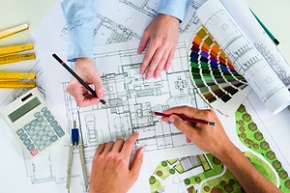Design code
On 6 August 2020, the government published ‘Planning for the Future’ a consultation on reforms to the planning system. The proposals were intended to streamline the process, cut red tape, harness technology and protect green space to deliver high-quality, sustainable communities. ‘Planning for the Future’ included proposals for local authorities to introduce local design codes giving communities control over what is built in their areas.
On 20 July 2021, the Ministry of Housing, Communities & Local Government introduced the Building Beautiful Places plan, a programme incorporating a range of measures including an update of the National Planning Policy Framework (NPPF), the introduction of the National Model Design Code (NMDC) and the creation of the Office for Place.
The NPPF was amended to urge all councils to develop a local design code (an illustrated design guide that sets the standard for a local area) with input from local people. The changes to the NPPF set an expectation that good quality design should be approved and includes an environmental commitment to ensure that all streets are lined with trees and that biodiversity and access to nature will be improved. The word “beauty” will be specifically included in planning rules for the first time since the system was created in 1947. Greater emphasis will also be placed on instilling a sense of local pride within the community.
The process for creating a local design code has been outlined in the NMDC. It provides advice to local planning authorities on the process for producing codes, the design parameters and issues that need to be considered and tailored to their own context. It also includes methods to capture and reflect the views of the local community by the use of digital tools, social media, face-to-face workshops, roundtables and exhibitions.
To support the use of design codes the government created the Office for Place within the Ministry of Housing, Communities and Local Government. This will support communities to turn their visions into local standards that all new buildings will be required to meet. The Office for Place will be advised by a board of experts from the planning and development industry.
Nicholas Boys Smith, Chair of the Advisory Board for the Office for Place, said: " We must do better, more often for the benefit of communities, to contribute to the economic success of our towns and cities and to look after our planet... Our vision is to help families, neighbourhoods, councils, landowners, housebuilders and developers more easily create places in which our communities can prosper." Ref https://www.gov.uk/government/news/vision-for-building-beautiful-places-set-out-at-landmark-design-event
The National Planning Policy Framework (NPPF), published by the Ministry of Housing, Communities and Local Government in 2021, defines a design code as: ‘A set of illustrated design requirements that provide specific, detailed parameters for the physical development of a site or area. The graphic and written components of the code should build upon a design vision, such as a masterplan or other design and development framework for a site or area.’
This was revised in 2024 to read: 'set of illustrated design requirements that provide specific, detailed parameters for the physical development of a site or area. The graphic and written components of the code should build upon a design vision, such as a masterplan or other design and development framework for a site or area.'
Engagement Overlay to the RIBA Plan of Work, published by the RIBA in January 2024, states: ‘A design code is a set of design requirements for the physical development of a site or area. It is made up of rules that are clear, specific and unambiguous, and it should normally include extensive graphical illustrations. The code should build upon a design vision, such as a masterplan or other design and development framework for a site or area and often results in ‘zoning’ criteria. Community led design code is a code that is co-created with a steering group and, or community. Similar to a community charter. It aims to make navigating a complicated design and planning process easier, ensure high-quality projects, add character, give communities agency, build confidence in the system, and speed up the planning process. It can be linked to measures of success.’
See also Government advice: Top tips for getting started with Design Codes.
[edit] Related articles on Designing Buildings
- Build back better.
- Building Beautiful Places plan.
- Building Better, Building Beautiful Commission interim report.
- Building Better, Building Beautiful Commission.
- Design codes and pattern books.
- Design codes: intentions and reality.
- Design guide.
- Future Homes Standard.
- National Model Design Code.
- Pilot programme for National Model Design Code NMDC.
- Planning for the future.
Featured articles and news
The history of building regulations
A story of belated action in response to crisis.
Moisture, fire safety and emerging trends in living walls
How wet is your wall?
Current policy explained and newly published consultation by the UK and Welsh Governments.
British architecture 1919–39. Book review.
Conservation of listed prefabs in Moseley.
Energy industry calls for urgent reform.
Heritage staff wellbeing at work survey.
A five minute introduction.
50th Golden anniversary ECA Edmundson apprentice award
Showcasing the very best electrotechnical and engineering services for half a century.
Welsh government consults on HRBs and reg changes
Seeking feedback on a new regulatory regime and a broad range of issues.
CIOB Client Guide (2nd edition) March 2025
Free download covering statutory dutyholder roles under the Building Safety Act and much more.
AI and automation in 3D modelling and spatial design
Can almost half of design development tasks be automated?
Minister quizzed, as responsibility transfers to MHCLG and BSR publishes new building control guidance.
UK environmental regulations reform 2025
Amid wider new approaches to ensure regulators and regulation support growth.
The maintenance challenge of tenements.
BSRIA Statutory Compliance Inspection Checklist
BG80/2025 now significantly updated to include requirements related to important changes in legislation.























